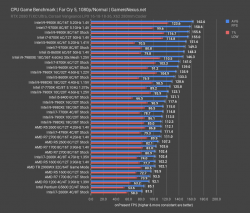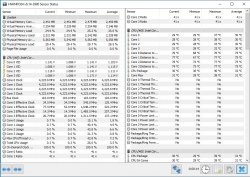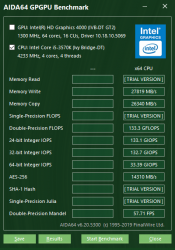- Joined
- Oct 17, 2019
- Messages
- 237 (0.11/day)
| System Name | Button |
|---|---|
| Processor | Intel Core i5-9600K |
| Motherboard | Asus ROG Strix Z390-F |
| Cooling | Corsair H100i PRO |
| Memory | Corsair Vengeance LPX 3000MHz, CL15, (Red) |
| Video Card(s) | Asus ROG Strix RX 570 4GB OC version |
| Storage | Sabrent Rocket 1TB PCIe 3.0 x4 M.2 internal SSD |
| Display(s) | BenQ GW2270 (1920x 1080) 60 MHz |
| Case | Cooler Master MasterBox MB511 RGB |
| Power Supply | Corsair RMi 850i |
| Keyboard | Cougar Vantar |
I have found another problem. Today's weather dropped. The room temperature has dropped by 3 degrees. But when I leave the system @ stock speed idle, the temperature is higher than all the stress tests before.
I imagine that the thermal paste comes with the AIO has melted and unevenly spreaded. Another evidence is that 2 out of 6 cores always differ from the other by 8 to 10 degrees, is that a sign that the thermal needs to be replaced?
I imagine that the thermal paste comes with the AIO has melted and unevenly spreaded. Another evidence is that 2 out of 6 cores always differ from the other by 8 to 10 degrees, is that a sign that the thermal needs to be replaced?








